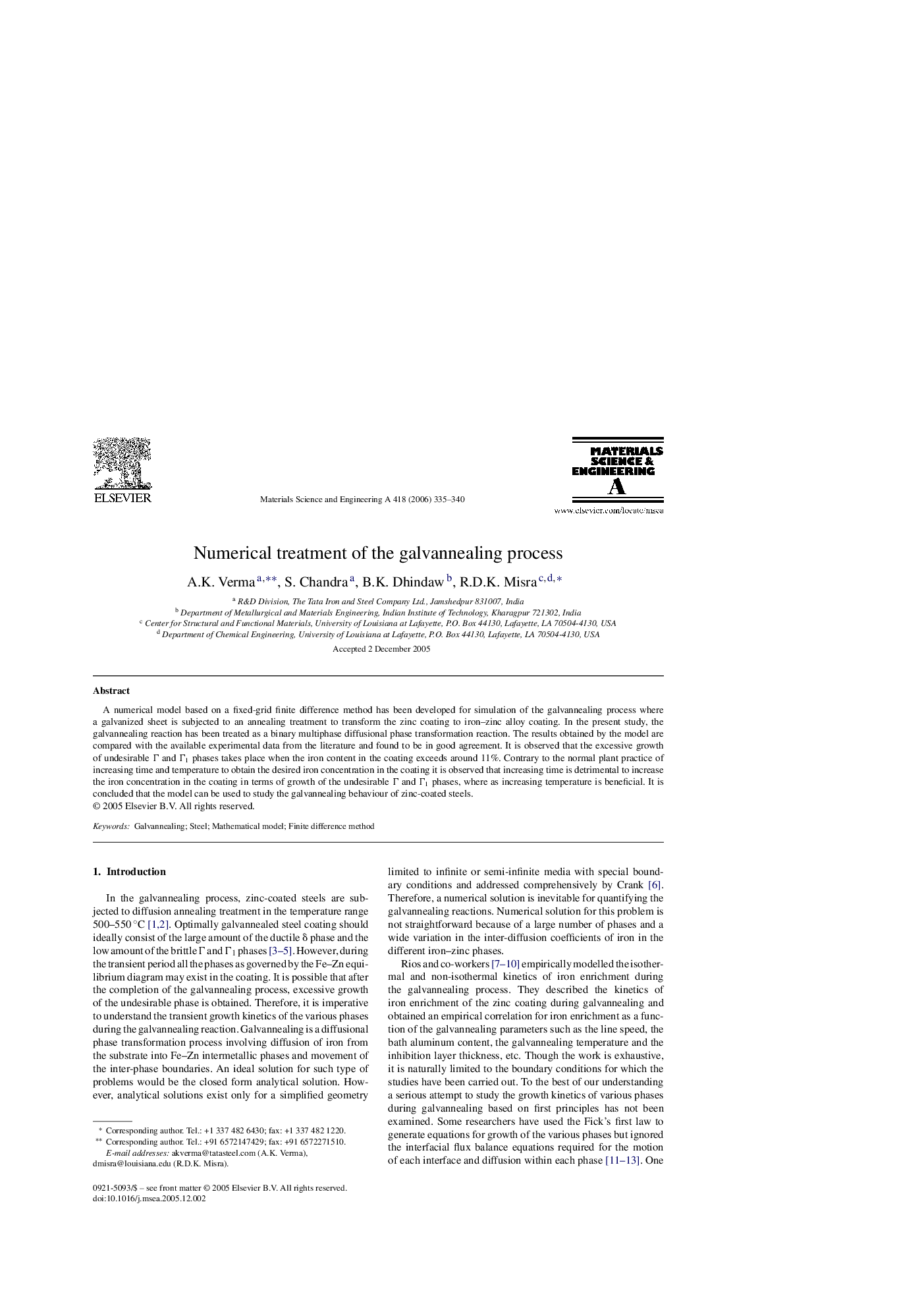| کد مقاله | کد نشریه | سال انتشار | مقاله انگلیسی | نسخه تمام متن |
|---|---|---|---|---|
| 1586048 | 1514926 | 2006 | 6 صفحه PDF | دانلود رایگان |

A numerical model based on a fixed-grid finite difference method has been developed for simulation of the galvannealing process where a galvanized sheet is subjected to an annealing treatment to transform the zinc coating to iron–zinc alloy coating. In the present study, the galvannealing reaction has been treated as a binary multiphase diffusional phase transformation reaction. The results obtained by the model are compared with the available experimental data from the literature and found to be in good agreement. It is observed that the excessive growth of undesirable Γ and Γ1 phases takes place when the iron content in the coating exceeds around 11%. Contrary to the normal plant practice of increasing time and temperature to obtain the desired iron concentration in the coating it is observed that increasing time is detrimental to increase the iron concentration in the coating in terms of growth of the undesirable Γ and Γ1 phases, where as increasing temperature is beneficial. It is concluded that the model can be used to study the galvannealing behaviour of zinc-coated steels.
Journal: Materials Science and Engineering: A - Volume 418, Issues 1–2, 25 February 2006, Pages 335–340